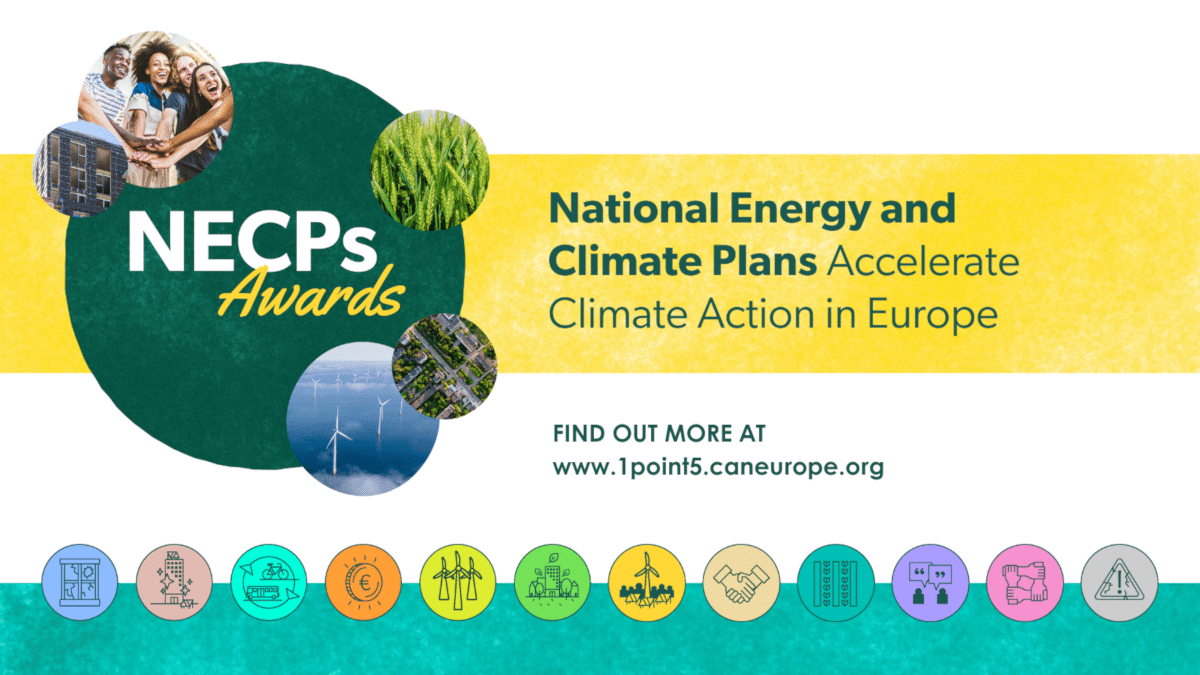Change is underway, with renewables flourishing and demand for fossil gas declining, while coal has no future in sight. National Energy and Climate Plans (NECPs) are the right opportunity to push the fast-forward button and accelerate climate action. Inspiring stories from all over Europe showcase how the just transition can be accelerated, as the deadline for Member States to come up with their new draft NECPs – end of June – is swiftly approaching.
Climate and environment NGOs based in 12 European countries gathered almost one hundred concrete examples of climate action measures implemented on the ground. These should inspire all governments and put Europe on track for achieving a safe and stable climate and to ensure we all harvest the benefits of a sustainable life.
The deadline for Member States to submit their draft NECPs is rapidly approaching. By examining the stories of countries taking action, such as promoting clean public transport, advancing renewable energy deployment, greening cities, shortening food supply chains, and combating energy poverty, we can find inspiration. We should urge our governments to include these effective measures in their NECPs and exclude those that civil society deems problematic.
Technical and economic barriers to change have been surpassed, leaving political obstacles as the main hindrance. Therefore, the revision of NECPs presents a crucial opportunity for EU Member States to expedite climate action and energy transition. By doing so, NECPs can bring about transformative action and surpass the ambition of the European Green Deal to reduce net emissions by 55% by 2030.
All EU countries must submit their draft updated National Energy and Climate Plans to the European Commission by the end of June 2023, with the final versions due by June 2024 incorporating feedback from the European Commission and relevant stakeholders.
Gross emissions reductions of at least -65% by 2030
NECPs serve as the framework for Member States to outline their climate and energy goals, policies, and measures from 2021 to 2030. These comprehensive documents combine the targets, policies, and measures planned by EU Member States to fulfil their climate and energy commitments. They should align with the Paris Agreement as well as the EU Green Deal objectives, including the updated EU climate and energy targets for 2030, and revised climate and energy legislation. NECPs encompass policies and measures related to various aspects of people’s lives and national economies.
The current EU target of reducing net emissions by 55% by 2030 does not adequately address the climate emergency or the EU’s equitable share of global emissions reduction. In order to contribute to limiting temperature increase to 1.5°C by the end of the century, the EU must surpass its 2030 target and achieve gross emissions reductions of at least -65% by 2030. To accomplish this, NECPs should strive for the highest level of ambition, emphasizing increased use of renewable energy sources, improved energy efficiency, promotion of low-emission transportation, sustainable land use, integrated waste management, and a clear path to phase out fossil fuels from all sectors.
Background
The European Union has now closed almost all energy and climate files negotiations under the ‘Fit for 55’ package and has set climate and energy targets that Member States have to achieve. But climate NGOs know these will not be enough to limit global temperature increase to 1.5°C and radically transform EU countries’ energy systems for the better. Hence, the NECPs revision is the right opportunity for countries to align ambition with the Paris Agreement objective.
PREVIOUS
NEXT

